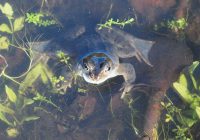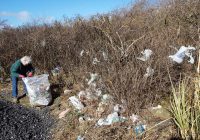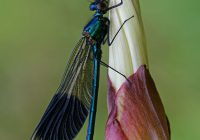Dr Phil Smith’s Wildlife Notes
March 2015
A pattern of dry spring months has been evident for over a decade, March having only 65% of normal rainfall in England and Wales. An unexpected deluge came on 12th-13th but a small recovery in the height of the dune water-table in mid-month was subsequently lost. The ponds at Freshfield Dune Heath Nature Reserve remained extremely low but still attracted lots of Common Frogs. Visiting on 8th, I was trying to count frogs in one of the ponds when an aeroplane from Woodvale flew over and about 40 males comically stuck their heads out of the water, obviously attracted by the sound of the engines. This was repeated several times and is a behaviour I had not seen before, though it is well known that male Natterjacks call in response to overflying aircraft. Returning on 22nd, I counted about 165 batches of frog spawn in three ponds. My first Peacock butterfly of the spring was a welcome sight and I had stunningly close views of a Goldcrest, the smallest British bird.
As usual, the Common Toads spawned later, with hundreds appearing at Cabin Hill on 23rd. The only water for them was in a shallow scrape dug in 2005, which also supported about 210 batches of frog spawn.
Spring bird migration was generally slow but Marshside produced 55 elegant Avocets on 15th, where the yellow umbellifer, Alexanders, was already in flower together with flamboyant catkins of Grey Willow. My first Wheatear, an immaculate male, was at Ainsdale Discovery Centre on 19th. Rachael Parks sent me photos of a Tree Bumble Bee (Bombus hypnorum) in her Formby garden. Having a distinctive orange thorax, this species colonised Britain in 2000 and has rapidly spread north, probably responding to climate change like so many other insects.
If you like gulls, which I do, there was some good news this month. The High Court blocked the continuation of a cull of Lesser Black-backed and Herring Gulls breeding on the Ribble Estuary National Nature Reserve. Last year, the Secretary of State allowed BAE Systems to start culling hundreds of gulls, which were claimed to pose a threat to aircraft using the Warton Aerodrome. However, the RSPB argued that Lesser Black-backed Gulls were “under significant pressure” in the UK and that the cull was too high. The judges found reasons to quash the order granting the gull cull.
According to the Local Environmental Quality Survey of England, the Northwest is the most littered region of Britain. One of the side-effects of litter is its impact on wildlife. For example, a fellow student in the early 1960s discovered that bottles carelessly thrown into hedgerows trapped small mammals. He would find up to 20 of their pathetic corpses in one bottle and could use them to investigate the distribution of mice, voles and shrews. Locally, our endangered Sand Lizards can also be trapped and killed by litter. I park regularly at Sands Lake, Ainsdale, where refuse around the carpark had become intolerable; so Patricia Lockwood and I spent an afternoon filling five large bin-bags. We couldn’t believe the quantity and variety of materials thrown into the bushes, including dozens of plastic milk bottles. Coincidentally, Two Council staff who empty litter-bins arrived as we were finishing and kindly agreed to take our bags with theirs. Then we learned they were both losing their jobs due to cuts! I went back three days later and was mortified to find over 20 items of litter in the area we had cleared.
My first wildlife notes in March 2007 mentioned a project to map our local dragonflies. Eight years later, this came to fruition with the publication of The Dragonflies of Lancashire and North Merseyside by the Lancashire & Cheshire Fauna Society. This 103-page, full-colour book includes sections on the history of recording, factors affecting dragonfly distribution and their main habitats in the region. The species accounts have detailed distribution maps of 24 dragonflies and damselflies, each being illustrated by high-quality photographs taken the field.




